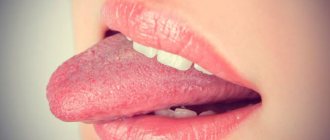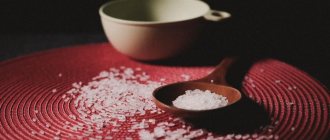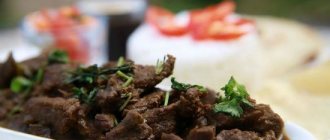Stool retention can be associated both with a slowdown in intestinal motility and with its accelerated work. Misalignment of digestive processes and impaired muscle tone lead to spastic constipation.
Increased smooth muscle tone is a condition opposite to atony. Involuntary contractions of the intestines cause impaired motility. As a result, feces remain longer than expected in various parts of the intestine, are compressed, and emptying becomes difficult.
The specificity of the treatment of spastic constipation is that not all laxatives may be suitable. Thus, medications that stimulate the receptors of the intestinal walls are prohibited - they can lead to a worsening of the condition.
Physiological reasons
The etiology of spastic constipation and, consequently, sheep feces is diverse. So, there are physiological and pathological causes of this condition.
Among the physiological causes of sheep feces in a child, the following are important:
- When the baby eats dry food, and his menu does not include hot liquid dishes and plant fiber, then constipation is a consequence of an unbalanced diet. In this case, eliminating the problem is very simple, just eliminate sweets and sandwiches, replacing them with fruits, give soups for lunch and introduce more vegetables.
- In addition, constipation quite often occurs due to dehydration, and therefore parents should carefully monitor the child’s drinking regime, especially when it comes to children under one year old.
- Another non-pathological reason why a child has sheep feces is physical inactivity, that is, constipation due to the lack of active games and sitting around the TV or computer all day. Helping a child in this case is quite simple; you just need to optimize motor activity.
- Sheep feces can appear due to various stresses due to punishment, fear, problems at school, and so on.
- Overdose of drugs such as Imodium (slows down intestinal motility), sorbents (activated carbon, Smecta, and so on).
Pathological causes
Perhaps the most common problem leading to the appearance of sheep feces in a child is dysbiosis. This condition is the replacement of “good” intestinal bacteria with bad ones, as a result of which the digestion of food in the large intestine is disrupted, the immune system suffers, vitamins are not synthesized, and so on.
Dysbacteriosis can lead to:
- intestinal and other infections suffered by the mother during pregnancy and by the child after birth;
- delivery by caesarean section;
- irrational feeding (lack of breastfeeding, incorrectly selected, introduced or unadapted milk formula, incorrectly introduced complementary foods);
- unbalanced diet (for older children);
- antibiotic therapy;
- decreased immunity;
- bad ecology;
- helminthic infestations.
Among the pathological causes of changes in stool in the form of sheep feces, the following are important:
- stomach ulcer;
- meningitis;
- diabetes mellitus;
- hypothyroidism
Parents' actions
Such changes in stool are usually preceded by problems with bowel movements. Observant parents will notice that the baby has not pooped for several days.
In this case, children may sit on the potty to no avail. The bowel movement itself is painful, the child strains, turns red and sometimes cries. After some time, hard, pea-like feces appear. In addition, mucus may be present, and in more severe cases, droplets of blood.
Parents often wonder if their child has sheep feces, what to do.
Before visiting the pediatrician, parents should:
- review the baby’s diet, enriching it with fresh vegetables/fruits and fermented milk products; in addition, it is necessary to exclude dry snacks;
- if a problem arises in a baby, keep breastfeeding longer, introduce complementary foods on time, and if the child is “artificial”, feed exclusively with adapted formulas;
- optimize your drinking regime. As a rule, the problem is easily solved by a glass of ordinary water 30 minutes before meals;
- keep your child busy with active games and maintain sufficient physical activity;
- create the most comfortable psychological atmosphere.
If, as a result of the measures taken, the stool has not returned to normal for several days, then a trip to the pediatrician cannot be postponed. Most likely, the doctor, after listening to the complaints of the patient or his parents, will prescribe additional diagnostic methods. Only a specialist can correctly determine the cause of the disease and prescribe the appropriate treatment.
How to get rid of fecal stones
If you suspect a pathology, you should seek advice from a specialist. If the pathology is not advanced, the doctor will prescribe laxatives that promote the passage of feces at home.
It is not recommended to abuse laxatives: together with toxins, they can wash beneficial microelements out of the body.
Diet
The patient's diet should include light foods: cereals, vegetables and fruits. At the same time, it is allowed to eat fish and lean meat 2-3 times every 7 days. Meals should be fractional - up to 6 times a day.
Plain water will help start your intestines. To do this, drink a glass of water every morning on an empty stomach.
A person who has difficulty defecating should reconsider their diet. The daily menu should include:
- vegetable fibers;
- porridge;
- bran;
- whole grain bread;
- vegetables and fruits;
- a lot of liquid.
Exclude from the diet:
- rice;
- boiled carrots;
- cheese;
- bananas;
- milk.
A salad made from spinach and fresh carrots will benefit your intestines. Both ingredients are finely chopped and seasoned with olive oil.
In the evening before going to bed, you can drink kefir or take one spoon of Vaseline or castor oil. These products have a laxative effect.
Starvation
You can clear the intestines of fecal impaction using therapeutic fasting. To do this, the patient should consume one orange in the morning and evening for two weeks.
The main condition is the absence of diseases for which the fruit is prohibited, as well as allergies to citrus fruits.
Apples
An apple diet will help unload the gastrointestinal tract. To do this, eat 2 kg of apples throughout the day and drink exclusively herbal decoctions or clean water.
Cleaning is carried out once a month.
Porridge
Eating porridge in water will remove old plugs and remove toxins and waste.
In addition, porridge has a beneficial effect on the digestive system and also heals damaged gastric mucosa.
For cooking you will need rice and oatmeal in equal proportions.
The porridge is prepared without adding butter or milk. This dish is eaten every day for breakfast.
Enemas
What to do if the pathology has become chronic and constipation has been bothering you for a long time?
A popular folk remedy is the enema. Such procedures have a local effect and safely wash away stool deposits. In addition, enemas help neutralize toxic substances and also restore intestinal motility.
The fecal plug is easily broken through with an enema using glycerin, petroleum jelly or hydrogen peroxide. In addition, you can add to the solution:
- herbal decoctions;
- laxatives;
- vegetable or olive oil;
- salt solution, magnesia.
Cleansing procedures are carried out in courses.
The duration of cleansing depends on the amount of slagging in the intestines, but should not exceed twice a week.
You can also get rid of fecal impaction with the following enema. For preparation you will need:
- infusion prepared from chamomile, knotweed, motherwort, linden;
- fresh beet juice;
- vinegar.
The intestines are washed with the resulting solution for 2 days.
Flax seeds soften clots well. To prepare you will need:
- 20 g flaxseeds;
- 1 liter of water.
The composition is boiled over fire for 20 minutes, cooled, and 2 tablespoons of mustard oil are added. The resulting product is administered into the intestines using an enema. The procedure is carried out for 3 days, after which they take a break for a day and repeat the treatment.
Glycerin suppositories, which must be inserted into the rectum in the morning or at night, promote the removal of fecal plugs.
Dried fruits
Eating dried fruits will provide health benefits. By introducing prunes, dried apricots and raisins into your diet, you can not only soften plugs, improve the emptying process, but also enrich the body with essential vitamins.
Juices
Freshly squeezed juices successfully dissolve fecal compactions, remove toxins, promote the natural cleansing process, and also enrich the body with useful substances.
For this purpose, juices squeezed from carrots, beets and cabbage are used, which are consumed either separately or mixed with each other.
It is most effective to drink juices in the morning on an empty stomach.
Vodka with oil
One of the popular folk remedies for clearing the intestines of accumulated clots is the use of vodka with oil. To prepare, you will need to combine one glass of vegetable oil with the same amount of vodka.
Shake the mixture well and take 5 g before breakfast for a month.
Drugs
An effective way to clean feces is to use the gel-like product Norgalax. The substance is used as a microenema, injected into the rectum twice a day.
Enimax, which is sold in the form of enemas, can also help. It effectively dissolves fecal stones and will help you forget about constipation for a long time.
Hydrocolonoscopy
A medical procedure that allows you to cleanse the intestines even from large clots is carried out by specialists. The manipulation involves injecting a large amount of water into the intestines under pressure, due to which the fecal plug softens and the deposits are removed from the body naturally.
You can do the washing yourself. To do this, use a saline solution: for 1 liter of water you will need 1 teaspoon of salt. Within 1-1.5 hours you need to drink 12 glasses of the resulting solution. The liquid has a strong laxative effect, resulting in emptying. Salt water is consumed until the stool becomes watery. The procedure is carried out in the morning before breakfast. After cleansing, you need to have a fasting day, eating porridge with water, fruits and vegetables.
Constipation, which has been bothering a person for a long time, can lead to a deterioration in overall health, because, as you know, the intestines are responsible for immunity. Systematic cleaning will not only remove old feces, but also improve the functioning of the entire body.
Diagnostics
Before prescribing a suitable treatment, the doctor, as a rule, refers the patient to undergo additional studies of the gastrointestinal tract, as well as according to indications: CBC, blood biochemistry, and so on.
The simplest diagnostic method is a test for dysbacteriosis and a coprogram, which includes studying the physical properties of feces and conducting microscopy.
Ultrasound diagnostics, an equally informative and painless research method, is carried out to study the condition of internal organs.
Perhaps the most unpleasant procedure for a baby is FEGDS. Before undergoing this examination, the child must be prepared mentally for how this examination will be carried out.
Treatment of sheep feces in a child
Therapy for stool disorders is selected in accordance with the reasons that caused them, as well as data from additional studies.
So, if sheep feces are caused by errors in the diet, the doctor strongly recommends normalizing the baby’s diet. Children up to one year old should continue to breastfeed, introduce complementary foods correctly, and so on.
For older children, exclude baked goods, rice, chocolate, dumplings, semolina, pasta and other “strengthening” foods. Preference should be given to products that restore microflora and have a laxative effect: plums, oatmeal, buckwheat, apricots, pearl barley, kiwi, fermented milk products, pumpkin, etc. In addition, the patient is recommended to normalize the drinking regime.
A light abdominal massage helps a lot. Using gentle movements and light pressure, massage your tummy in a clockwise direction.
If sheep feces are a consequence of stress, you will need to consult a psychologist and create a favorable atmosphere at home.
Drug treatment
Among the medications, the most effective are lactulose-based drugs, for example, “Lactusan”, “Normaze”, which have a laxative effect and the property of restoring the intestinal biocenosis, stimulating peristaltic movements and the activity of digestive enzymes, due to which the shape and consistency of feces returns to normal.
In addition, the doctor may prescribe antispasmodics Mebeverine or Duspatalin. These drugs have a laxative effect; they relax the smooth muscles of the intestinal wall.
Drugs such as “Bifiform” or “Linex” eliminate dysbiosis, populate the intestines with “good” flora and make it healthier.
If sheep feces appear as a result of serious pathologies, self-medication is not acceptable. For example, for stomach ulcers, therapy is prescribed by a gastroenterologist, meningitis is treated in neurological hospitals, and diabetes is treated by an endocrinologist.
At-risk groups
Most often, adults who live in the city suffer from this type of constipation, such as sheep feces. They lead a less active lifestyle than rural residents. They also eat non-natural foods that contain virtually no vegetable fats. All this leads to hardening of the stool and abnormal bowel function.
This problem occurs more often in men than in women. This is due to the fact that women are more attentive to their health and nutrition, devote more time to their appearance, and accordingly lead a more active lifestyle.
Also at risk are people suffering from chronic diseases not only of the intestines, but also of other organs and systems.
Colitis, diabetes, gout, atherosclerosis - any of these diseases can make a person's stool look like sheep feces.
Folk recipes
You can treat sheep feces in a child using traditional methods, the use of which should still be discussed with a doctor in advance.
The most effective traditional medicine remedies are:
- A decoction of gooseberries. To do this, the fruits are boiled for 10 minutes, then cooled. The child is given a quarter glass of this decoction per day.
- Rowan berries (alcohol tincture with added sugar). You need to take the product one teaspoon at a time. after diluting with water, for up to 10 days.
- Lingonberry berries. They have laxative properties and stimulate intestinal peristalsis.
- Sunflower or olive oil, taken on an empty stomach in the morning in the amount of 1 tsp. - excellent prevention of hard feces and stool retention.
Laxatives
Laxatives are a fairly effective method of combating coprolites, but they have a number of limitations. Drugs from this group may have different mechanisms of action. This can affect the patient's condition and even worsen the course of his disease.
In addition, in most cases, the use of laxatives is accompanied by the removal of important electrolytes from the body, which also has certain consequences. For example, a decrease in potassium content worsens the course of cardiovascular pathologies.
Possible consequences
Sheep feces are a sign of constipation. This condition should never be ignored, as the consequences of the disease can be very sad. The stool should be regular. Otherwise, feces stagnate in the intestines, becoming a source of toxins. Toxins penetrate the blood, causing general intoxication. In this case, the child suffers from headaches, becomes tearful and irritable, against this background anal fissures, rectal prolapse, and hemorrhoids may occur. Such children are often developmentally delayed. Ignoring this condition significantly increases the risk of developing intestinal tumors.
Symptoms and manifestations
Spastic constipation is quite easy to recognize. Doctors Shulpekova Yu. O. and Ivashkin V. T. describe it as follows: “Constipation is spastic in nature, when the tone of some part of the intestine is increased and feces cannot overcome this place. Feces take on the appearance of sheep” (Shulpekova, Ivashkin, 2004, p. 49).
Unlike atonic ones, these forms of constipation are less likely to be prolonged; stool retention lasts no more than 2–5 days. Stool can be daily, but fragmented and in a very small volume.
Associated symptoms may include the following:
- pain and cramps in the abdomen;
- bloating, increased gas formation;
- false urge to defecate;
- feeling of heaviness in the stomach.
Pain and discomfort can be localized in different parts of the abdomen, it all depends on which part of the muscle is in spasm, where exactly there is an accumulation of dense feces and gases. Therefore, a symptom of spastic constipation may be pain in the side on the left or right, in the lower abdomen and in the epigastric region.
There are also nonspecific manifestations associated with intoxication of the body: nausea, headache, dizziness, increased sweating, pale skin, fatigue, decreased performance, irritability.








